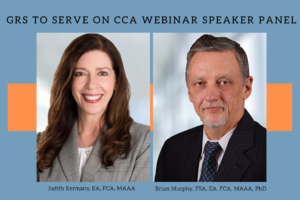Industry News
NASRA Updates Issue Brief on Public Pension Plan Investment Return Assumptions
In February 2020, the National Association of State Retirement Administrators (NASRA) updated its standing issue brief, Public Pension Plan Investment Return Assumptions. NASRA examined public pension investment return data and found that, on average over the past 25 years, public pension funds have exceeded their assumed rates of investment return. The brief finds that for the 25-year period ending December 31, 2019, the median actual annual public pension fund investment return was 8.2% and for the 30-year period was 8.3%.
In addition, the brief finds that recent changes in economic and financial conditions have caused many public plans to reexamine their investment return assumptions. Since fiscal year (FY) 2010, more than 95% of the 130 plans included in the Public Fund Survey have lowered their return assumptions. While the dominate investment return assumption ranges from 7.0% to 7.5% for the 130 plans, the average return assumption is 7.22% in FY 2020. The brief also provides a table showing the investment return assumptions that are in use, or announced for use, by the 130 plans included in the Public Fund Survey as of February 2020.
The brief also discusses how the investment return assumption is established and evaluated. It then compares these assumptions with public funds’ actual investment experience and the challenging investment environment for public retirement systems.
The brief emphasizes that a governmental plan’s investment return assumption is focused on the long-term, typically an investment horizon of 30 to 50 years. Investment returns are important because investment earnings account for a majority of the revenues received by most public pension plans. According to the brief, since 1989, public pension funds have accrued an estimated $8.1 trillion in revenue. Of that amount, investment earnings account for $5.1 trillion (63%), employer contributions account for $2.1 trillion (26%), and employee contributions account for $900 billion (11%).
Typically, a 25-basis point reduction in the investment return assumption will increase the cost of a plan that has a cost-of-living adjustment (COLA) by 3% of pay (i.e., a reduction from 7.5% to 7.25% will increase the cost from 10% to 13% of pay). For a plan without a COLA, the return assumption will increase the cost by 2% of pay.
The brief is available here.
 Judith Kermans
Judith Kermans